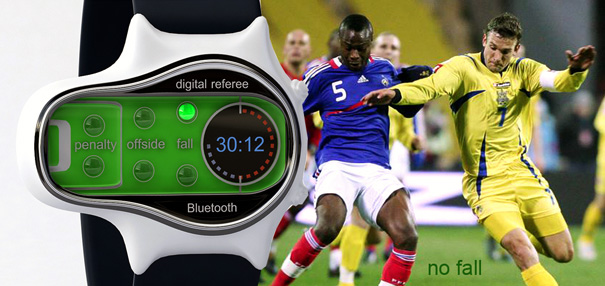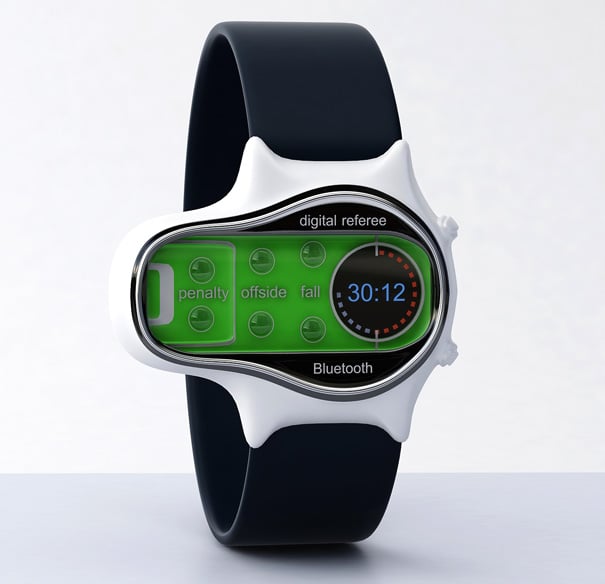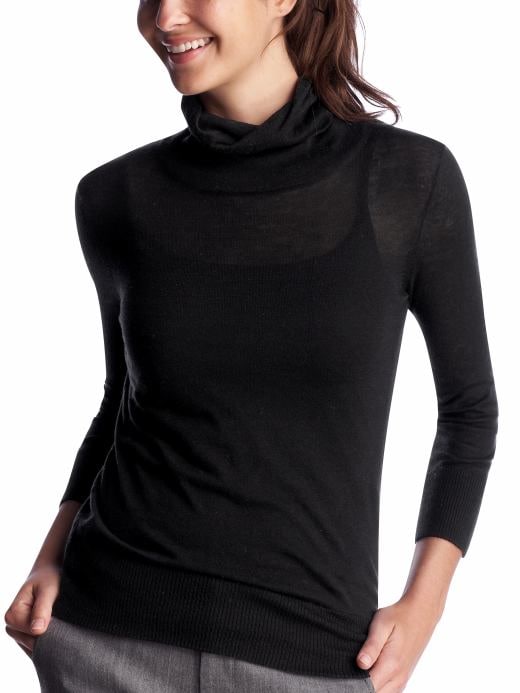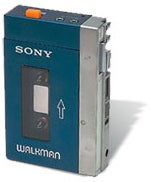http://simplerocknroll.blogspot.com/
Sunday, June 9, 2013
Alleged photos of iPhone 5S front panel show new sensor array
Wednesday, February 8, 2012
the simple gadget that work with your apartment building
24 million apartments don't have an individual water meter. Instead, the water bill is tallied by the entire building. That means that it is difficult to encourage efficiency through a price signal because people aren't paying for the water they actually use. In the past, if you wanted to install individual meters for every unit, you'd have to cut into the water pipes and stick those meters inside. That's expensive and time-consuming. The Soneter meter, by contrast, clamps on *outside* the pipe, meaning it's easier and cheaper to install.
The way they like to put it, Soneter is "extending the smart grid to water networks." The hardware works with in concert with management software that can provide real-time feedback to residents about how much water they're using.
This is a cool, sensor-based business that seems to have a clear, addressable market.
Monday, July 5, 2010
gadget that referee should have
It only takes a stinky fish to dirty the entire pond, and this year FIFA has 2 fishes tainting their image. To rub salt over our wounds Sepp Blatter apologizes but still says FIFA has reservations over incorporating technology into the sport. I have only two words for him: England and Mexico! Even a money-spinning sport like cricket has adopted the third umpire into the game, because we are only HUMANS! FIFA too needs a “Referee Third Eye”.
Andy explains:
I believe that the proper way out would be to use an additional referee who shall be monitored game on the screen. And after browsing through Bluetooth make a decision by the watch
“Referee Third Eye “. Accordingly, in a situation where for example it was offside, the video referee on the watch flashed to red light and the chief arbiter at once to make objective decisions. (See the situations in the picture).“Referee Third Eye” – best decision.
Designer: Andy Kurovets




Friday, June 11, 2010
rolex watches buyer guides

Up until the First World War, wristwatches were not fashionable amongst men. However Hans Wilsdorf, a German watch merchant living and working in London around the turn of the twentieth century was ahead of his time when he decided that Gents wristlet watches (the early name for them) were going to become the next big thing. He commissioned a low-cost movement from Hermann Aegler, based in Bienne, Switzerland and had these incorporated in to an early range of Men?s wristwatches. A brilliant marketeer, years ahead of his time, Wilsdorf decided to concentrate his efforts upon producing wristwatches which were as accurate, durable and user-friendly as possible. Rather than register his own name for the watches he registered a made-up name for his new range. He called it Rolex.
However, it was not until 1926 that the first ?modern? Rolex was born; it was called the Oyster. Legend has it that Wilsdorf was hosting a dinner party and having a particularly hard time opening an oyster. He made a comment to his guests that he hoped the design of his new watch would prove to be as resilient as the mollusk. The name was born. This was a watch that would be totally watertight whilst still continuing to offer precision. On October 7th 1927, Mercedes Gleitze, an English typist, swam the channel wearing an Oyster. Thereafter, the watches were displayed prominently in jewelers shop windows, inside a fish tank totally sub
mersed in water; a powerful image that would forever link the Rolex brand name to marine and sub-marine applications.
The Oyster has survived, in various g
uises, to this day. In 1945 the ?Datejust? was born, the world?s first watch to show the date. Twelve years later the Day-Date was released (Rolex doesn?t rush into things) and almost all subsequent watches in the range were based upon these three basic variants: Oyster, DateJust & Day Date. Additionally, there are only a couple of case types called simply Oyster and Oyster Professional and two bracelet types; Oyster and Jubilee.
Finally, you can specify the metal from which your watch is made. Each is available in either steel, Rolesor (a mix of steel and 18 ct gold or platinum), 18 ct gold, white gold or platinum
There are five Oyster and six Oyster Professional models in the range. Unless you are a big bloke with Schwarzenegger sized wrists then you might want to give the Professional models a miss. These are seriously big watches and they demand big egos to go with them. It?s not until you actually try one on in the store that you realize just how big and heavy these timepieces are. Of course that is exactly the reason why many people buy them. Discrete they are not. The Oyster is not quite as ?in your face?, although you can still show just how lacking in taste you are by specifying the solid gold case and strap complete with diamonds, instead of numbers, adorning the watch face. Outrageous! A plain steel Oyster is about as discrete as a Rolex ever gets.
Bottom of the range is the Air King, next up is the Oyster Perpetual followed by the Date, Datejust and Day Date. In the Professional range we have the Explorer, GMT Master II, Sea-
Dweller, Submariner, Yacht Master and finally, the Cosmograph Daytona.
So what should you pay for one of these dubious masterpieces? An obscene amount of money is the short answer, but before we get into that it?s worth discussing the general marketplace because it is quite unique. A Rolex is as good as cash in most countries, which can be a good thing or a bad thing depending upon how you look
at it and what kind of neighborhood you happen to find yourself in. As long as you look after it and have it regularly serviced (once every four years), your Rolex should appreciate in value over time. The secondhand market rises in line with inflation and the price of new equivalents. This means that after about three years, your Roly should be worth what you paid for it and it will continue to appreciate thereafter. Unfortunately, it follows that a lot of Rolies, particularly the brasher models, are bought for cash as an alternative to using a bank. I?ll leave you to work out the details for yourself but it doesn?t take an Einstein to figure it out. Businessmen, particularly company directors, tend to wear the more discrete Oyster, other kinds of "businessmen" don?t. Now, don't get me wrong, I'm not suggesting that any big bloke wearing a Professional is dodgy, but I'd keep the bugger in line of site if it were me!
Also, before you go diving into the secondhand market, be aware that there are lots of good and not so good forgeries out there and it is easy to be conned. Every genuine Rolex comes with a certificate of authenticity and you should never buy a Rolex without one unless you absolutely know what you are doing. Even then you can still get bitten. Some years ago I foolishly accepted an Oyster (complete with certificate) in part payment on a business deal. It wasn?t until about a year lat
er when I sent it off to Rolex to be serviced I discovered anything amiss. I received a fairly stiff letter from the factory informing me the watch was a wrong ?un and that they reserved the right to destroy it since it infringed their copyright. I wrote a groveling reply explaining that the watch was of sentimental value and, as a result, they relented and returned it. I could, I suppose, have sold it on to some other poor schmuck but I don?t have the stomach for dodgy dealing so I never did and it remains in a jewelry box at home, a permanen
t reminder to my foolishness. Don?t mess with secondhand Rolies unless you really know what you are looking at.
The best way to buy a Rolex, new or used, is to visit an authorized dealer. You will find at least one in most cities. The next question is, how much should you pay? The good news is that Rolex do publish an official price list and you can obtain one by phoning or writing to the Rolex head office in your country. In the UK they can be found at:
THE ROLEX WATCH COMPANY Ltd.
19 St. James's Square
London SW1Y 4JE
UNITED KINGDOM
Tel. + 44 (0) 207 024 7300
Fax: + 44 (0) 207 024 7317
They can also put you in touch with your nearest authorized dealer. It?s always best to ask for several because you will find that even large dealers do not stock the whole range and you may have to shop around to find the watch you want. However, they will often have a used example so it?s worth inquiring. The Rolex web-site www.rolex.com is pretty cool and it has a ?design your watch? section, a bit like you find on the car manufacturers? sites so you can see the entire range and pick your watch from
the comfort of your own home.
Once you have decided upon your watch and located it, it?s time to schlep off to the dealer to make your purchase. The good news is that most are prepared to deal and they will be happy to discount up to around 10% on more expensive models if you ask nicely.
So how much is obscene? At time of writing, a basic Oyster in steel will cost around £1800 brand spanking new. A good second hand example (again, from a dealer) will run you about £1400. From here it?s just a question of how obscene you want to get. An Oyster DateJust Gold Rolesor with a Jubilee bracelet lists at £3350, the same watch in 18ct gold runs out at about £8000.
Some models, like the Submariner, particularly the blue faced Rolesor (Butch Wilkins wears one, as do a few other footballers) can bequite hard to ge
t hold of and many dealers will tell you there is a waiting list. However it pays to phone around. After a long search and many calls, I recently located one, at a jeweler in Halifax of all places. It just goes to prove the old adage; ?Where there?s muck there?s brass!? As to Submariner prices, I was recently offered a second-hand steel in A1 condition for £1600. A new steel runs about £2200 and a Gold Rolesor about £3600.
Oyster ownership is relatively hassle free, aside from the constant fear of being mugged! Don?t worry it wears off after a while. These are very well made, durable watches. If you tend to lead a knockabout lifestyle then I would steer clear of any of the gold models for the simple reason that gold scratches quite easily. Other than that, just wash ?em in mild soap and water every now and again (use an old toothbrush to get into the nooks and crannies) and they should come up as good as new. The glass they use is some kind of highly scratch resistant c
rystal so you shouldn?t have any trouble with it at all. I?ve never managed to scratch one and I?m a bit of a clumsy bugger.
So there you have it; a quick buyers guide to the Oyster. Yes, yes I know the prices are obscene, but then so are houses and the Roly is just as good an investment if you look after it. Oh, and by the way, as well as the certificate of authenticity, do keep the box and everything in it somewhere safe. It does make a difference to the eventual second-hand value when you sell the watch on. Many people do end up trading their Rolies up. It?s quite common for folk to start with a bottom of the range model and then, as they acquire capital, trade up to higher and more expensive models.
One final point, and I am almost embarrassed to admit this, but wearing a Roly does make a difference. Ever walked into a posh car dealership in your jeans on a Sunday afternoon and tried to get a salesman?s attention? Ever been made to feel a bit second-class in a posh restaurant or at the check-in desk of a five star hotel? Strap a Rolex on your wrist (the brasher the better) and try again. The transformation will amaze you. Salesmen, restaurateurs and hoteliers can spot a genuine Roly at four hundred paces because big Rolies usually mean big spenders. It really shouldn?t matter but unfortunately it does. It?s a sad old World.
Monday, May 24, 2010
the most top gadget at past 50 year
At PC World, we'd be lost without these things. We don't merely test and write about digital gear, we live and breathe the stuff. In honor of this raging gizmo infatuation, we polled our editors and asked them to name the top 50 gadgets of the last 50 years. The rules? The devices had to be relatively small (no cars or big-screen TVs, for example), and we considered only those items whose digital descendants are covered in PC World (cameras, yes; blenders, no). We rated each gadget on its usefulness, design, degree of innovation, and influence on subsequent gadgets, as well as the ineffable quality we called the "cool factor." Then we tallied the results.
After a lot of Web surfing, spreadsheet wrangling, and some near fistfights, we emerged with the following list. Some items in our Top 50 are innovative devices that appeared briefly and then were quickly consigned to museums and future appearances on eBay, but whose influence spread widely. Others are products we use every day--or wish we could.
So join us as we visit with the ghosts of gadgets past and present.
1. Sony Walkman TPS-L2 (1979)
Portable music players are so cheap and ubiquitous today that it's hard to remember when they were luxury items, widely coveted and often stolen. But when the blue and silver Walkman debuted in 1979, no one had ever seen anything quite like it. The $200 player virtually invented the concept of "personal electronics."
The first Walkman (also branded as the Stowaway, the Soundabout, and the Freestyle before the current name stuck) featured a cassette player and the world's first lightweight headphones. Apparently fearful that consumers would consider the Walkman too antisocial, Sony built the first units with two headphone jacks so you could share music with a friend. The company later dropped this feature. Now, more than 25 years and some 330 million units later, nobody wonders why you're walking down the street with headphones on. Learn more in Sony's history of the Walkman. PCW photo by Rick Rizner; Walkman courtesy of Melissa Perenson.
The Rock Star Attitude and Why Women are Attracted to This - Create the Rockstar Mentality Too
If there's any one thing you know about rock stars, it's that they can have nearly any woman they want. After all, they have hordes of women throwing themselves at them at every concert.
Other than the music, fame, and money, what's the deal? They put their pants on one leg at a time like any body else. Actually, the attraction is something much more easily reached.
They stand out in a crowd.
Part of what a rock star develops, aside from his music, is his stage persona. They have to be over the top and completely able to work the audience with their own brand of sexy.
Do you have your own brand of sexy? You don’t have to be a rock star to have it. You just need to find a way to stand out from the crowd that will attract women.
Now this may mean growing your hair longer, or changing your style of clothing. Or, it can mean working out and getting your body in better shape. Even if you look more like Seth Rogen from "Knocked Up", than Matthew McConaughey, that's okay. If you want to be branded as sexy instead of brand x then you'll do whatever you need to do.
Don't have clue where to start? Just take a little time to people watch. Look to see who the women are watching. Take note of his dress, his hair, his gate, if he's doing something outrageous or unusual; anything that makes him stand out.
Now, find out which personality traits of rock stars that women like the most. Do this by asking female friends who they find sexy and ask why. Women are usually more than willing to tell you who they think is a really sexy rocker and why. They get turned on just talking about him.
Decide which traits will make YOU stand out, but now look weird. Then, practice them. The next time you go out, put on your brand of sexy and strut your stuff.
Sunday, December 6, 2009
How to choose perfect fitting clothing for women on a low budget

Better quality clothing does not mean that it will be more expensive, try to choose fabrics that are superior, for they will hang better to flatter your figure and last longer. The ideal alternative is a well-fitting skirt in a high quality fabric such as lightweight wool, which you may use throughout several seasons; avoid filling your wardrobe with badly fitting, multicolored skirts. A dark color such as black, navy or dark gray is a perfect choice, for you may wear it with different jackets every time as well as other accessories; this will change the overall look completely.
So try build up your wardrobe on a lower budget selecting a few dark skirts and pants as well as a few jackets and tops making sure the fabric is of very good quality, in order to fit better and last longer. Choose amongst fabrics such as linen, wool gabardine or wool crepe, these always fit better, and look for alternatives such as tighter fitting clothing or looser clothing for comfort; also look for belt loops that can change the appearance of the skirt or pants.
To further enhance women’s clothing, accessories are also important, these will embellish a particular item and can change the form of the clothing completely. You may look for inspiration in fashion magazines or at fashion shows, where you can get great ideas to coordinate different accessories to your clothing. Belts are very good accessory alternatives, you should opt for a leather belt with a distinctive buckle. Silk scarves can also remarkably change the look of women’s clothing, when worn over the shoulder or over one shoulder fastened with a brooch.
Make sure you use sound judgment when shopping, this will considerably help with a low budget; choose colors that suit you for the color scheme is one of the most important factors in women’s clothing. Look out for the contrast the colors have with your complexion and figure and match the skirts, pants and jackets with the blouses or tops. Try varying the colors and abandon those neutral colors that you feel may be safer to wear; try wearing cobalt or peacock blue with a brown suit, or deep purple with a moss green colored suit; be a little more daring!
Once you have chosen the fit and styles, shop around during sales at the shops that sell better quality women’s clothing that suit your tastes; it is a waste of time searching through all the shops, choose your favorite clothing shop and visit every few weeks or so, until you find the right outfit and price to go with it.
Consignment shops are also a good solution for designer clothes at budget prices, make a list of the clothing you need and have it handy, this will avoid all unnecessary expense on items you do not really need.



